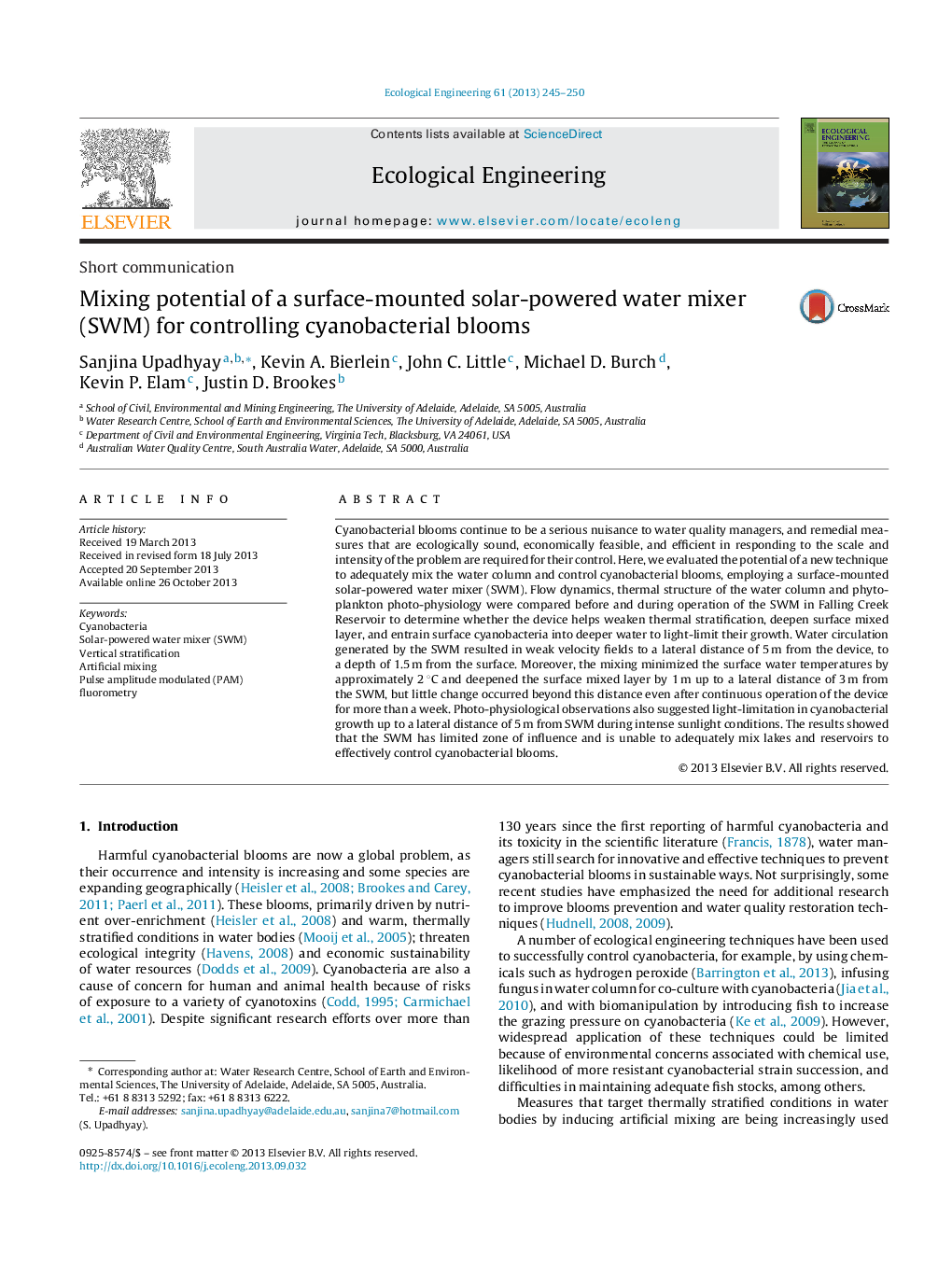| Article ID | Journal | Published Year | Pages | File Type |
|---|---|---|---|---|
| 4389485 | Ecological Engineering | 2013 | 6 Pages |
Abstract
Cyanobacterial blooms continue to be a serious nuisance to water quality managers, and remedial measures that are ecologically sound, economically feasible, and efficient in responding to the scale and intensity of the problem are required for their control. Here, we evaluated the potential of a new technique to adequately mix the water column and control cyanobacterial blooms, employing a surface-mounted solar-powered water mixer (SWM). Flow dynamics, thermal structure of the water column and phytoplankton photo-physiology were compared before and during operation of the SWM in Falling Creek Reservoir to determine whether the device helps weaken thermal stratification, deepen surface mixed layer, and entrain surface cyanobacteria into deeper water to light-limit their growth. Water circulation generated by the SWM resulted in weak velocity fields to a lateral distance of 5 m from the device, to a depth of 1.5 m from the surface. Moreover, the mixing minimized the surface water temperatures by approximately 2 °C and deepened the surface mixed layer by 1 m up to a lateral distance of 3 m from the SWM, but little change occurred beyond this distance even after continuous operation of the device for more than a week. Photo-physiological observations also suggested light-limitation in cyanobacterial growth up to a lateral distance of 5 m from SWM during intense sunlight conditions. The results showed that the SWM has limited zone of influence and is unable to adequately mix lakes and reservoirs to effectively control cyanobacterial blooms.
Keywords
Related Topics
Life Sciences
Agricultural and Biological Sciences
Ecology, Evolution, Behavior and Systematics
Authors
Sanjina Upadhyay, Kevin A. Bierlein, John C. Little, Michael D. Burch, Kevin P. Elam, Justin D. Brookes,
